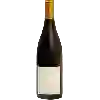
Domaine ToussaintTransparence Vouvray Demi-Sec
This wine generally goes well with
Details and technical informations about Domaine Toussaint's Transparence Vouvray Demi-Sec.
Discover the grape variety: Teroldego
An autochthonous Italian grape variety that has been cultivated for a very long time and is fairly common in the northern part of Italy (Trentino, Alto Adige, etc.). It can also be found in Slovenia, Croatia (Istria, etc.) and the United States (California, etc.), but is virtually unknown in France. Genetic analyses have revealed that it is the niece or nephew of dureza and therefore the aunt or uncle of syrah. It is also said to be related to marzemino, lagrein and refosco dal peduncolo rosso.
Informations about the Domaine Toussaint
The Domaine Toussaint is one of of the world's greatest estates. It offers 13 wines for sale in the of Vouvray to come and discover on site or to buy online.
The wine region of Vouvray
Vouvray is the most famous and most respected appellation of the Loire Valley's Touraine growing region. The title covers white wines of various styles (sweet wine, dry, still and sparkling), from eight villages around the medieval town of Vouvray, on the northern banks of the Loire river. Vouvray is the flagship wine of the Chenin Blanc grape (or Pineau de la Loire as it is known there), followed ever-closer by Savennieres and the sweet whites of Anjou. Few wine regions in the world use Chenin to the same extent.
The wine region of Loire Valley
The Loire Valley is a key wine region in western France. It follows the course of the Loire River on its Long journey through the heart of France, from the inland hills of the Auvergne to the plains of the French Atlantic coast near Nantes (Muscadet country). Important in terms of quantity and quality, the region produces large quantities (about 4 million h/l each year) of everyday wines, as well as some of France's greatest wines. Diversity is another of the region's major assets; the styles of wine produced here range from the light, tangy Muscadet to the Sweet, honeyed Bonnezeaux, the Sparkling whites of Vouvray and the juicy, Tannic reds of Chinon and Saumur.
The word of the wine: Peduncle
The stem of a flower or fruit.













